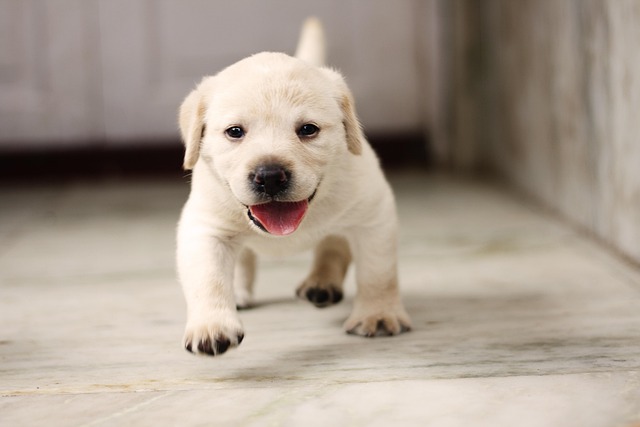
What is glaucoma in a dog?
You might notice your dog squinting more at mealtime or avoiding bright sunlight—these small changes could be early signs of a serious eye condition.
In the warm daily life we spend with dogs, their eager little eyes eagerly look at the food in our hands, often making us feel pity and unable to resist wanting to share the delicious food on our plates with them. However, among the many foods that humans love, lamb is not a choice that dogs can freely feed, which contains many reasons worth exploring in depth.
From the characteristics of lamb itself, it belongs to high protein and high-fat meat. Although protein is an essential nutrient for the growth and maintenance of various physiological functions in dogs, the high fat content in lamb meat may impose a heavy burden on the dog's digestive system. Compared to humans, the digestive system of dogs has developed unique characteristics during evolution. Their intestines are relatively short, and the secretion of digestive enzymes is different from that of humans, which makes their ability to digest high-fat foods weaker. When dogs consume too much high-fat lamb, they may not be able to effectively break down and absorb the fat in a timely manner, leading to indigestion. Symptoms such as vomiting, diarrhea, and loss of appetite make the owner feel anxious and heartbroken as they watch the once lively dog become lethargic.
Moreover, the meat fiber of lamb is relatively coarse. For dogs with relatively fragile oral and gastrointestinal systems, chewing and digesting these coarse and hard fibers is not an easy task. During the eating process, dogs may swallow lamb fiber directly due to difficulty chewing it, which greatly increases the risk of gastrointestinal blockage. Imagine a dog suddenly experiencing unbearable abdominal pain while playing, constantly sobbing, and the culprit may be those few bites of undercooked lamb. How can the owner not worry. Once gastrointestinal blockage occurs, dogs not only have to endure severe physical pain, but may also require complex treatment methods such as surgery, which is a physical and mental test for both dogs and their owners.

In addition, lamb has a strong and unique aroma. Dogs have an extremely sensitive sense of smell, far exceeding that of humans, and this strong odor may be too stimulating for them. Some dogs may show excessive excitement and difficulty controlling their behavior when they smell the smell of lamb. In an overly excited state, dogs are prone to making dangerous actions such as sudden running or collisions, which may not only harm themselves but also pose safety hazards to those around them. At the same time, this strong odor may also mask the original taste of the food, leading to a decrease in the dog's interest in other normal foods and developing a picky eating habit. When dogs start to turn a blind eye to nutritionally balanced dog food and only focus on lamb with a special odor, their owners have to worry about whether their nutrient intake is sufficient.
From the perspective of health risks, there are also many uncertainties in the source and processing of lamb meat. If the source of lamb is unknown, it may carry various harmful substances such as bacteria and parasites. For example, Toxoplasma gondii may parasitize lamb meat. Once dogs are infected with Toxoplasma gondii, it may cause a series of health problems, including fever, anemia, difficulty breathing, etc., seriously affecting their physical health. Even if the source of lamb meat is reliable, adding too many seasonings such as onions, garlic, etc. during the processing can be extremely harmful to dogs. Some components in onions and garlic can damage a dog's red blood cells, leading to hemolytic anemia, which is a great threat to the dog's life and health. We joyfully want to share delicious food with our dogs, but these unintentional oversights may lead them into a health crisis, which is a scene that every dog lover does not want to see.
Although it is not an absolute conclusion that dogs cannot eat lamb, in some cases, special treatment and moderate feeding of lamb may not have significant adverse effects on dogs. But for the health and safety of our dogs, as owners, we must be cautious when feeding them. When dogs look at the lamb in our hands with innocent eyes, we need to restrain the impulse to feed them and think more about their health. Every dog is a little angel in our lives, giving us unconditional love and companionship. We should also take care of their diet and daily life in the most scientific and responsible way, so that they can spend every beautiful day healthy and happy under our careful care. After all, watching our dog bounce around and carefree is the greatest happiness and satisfaction for us as owners. Our love for dogs is not only reflected in daily companionship and play, but also in every subtle decision related to their health. Careful feeding of lamb is a concrete manifestation of this love.

You might notice your dog squinting more at mealtime or avoiding bright sunlight—these small changes could be early signs of a serious eye condition.

Let’s set the scene: It’s a sweltering Phoenix afternoon—105°F outside—and you rushed your 2-year-old Lab mix, Cooper, on a quick walk to “get it over with.”

Let’s get real: You’re in your Miami apartment, watching your 3-year-old Corgi, Loki, struggle to climb the stairs to your second-floor unit.

Many dog owners brush off occasional scratching as just “dog behavior,” but persistent itching often signals something more—like a food allergy.

You might first notice your dog scratching more than usual—chewing at their paws until the fur looks thin, or rubbing their face against the couch nonstop.

Let’s be real: You’re standing in your Chicago apartment, watching your 3-year-old Beagle, Max, huff and puff just to climb onto the couch.